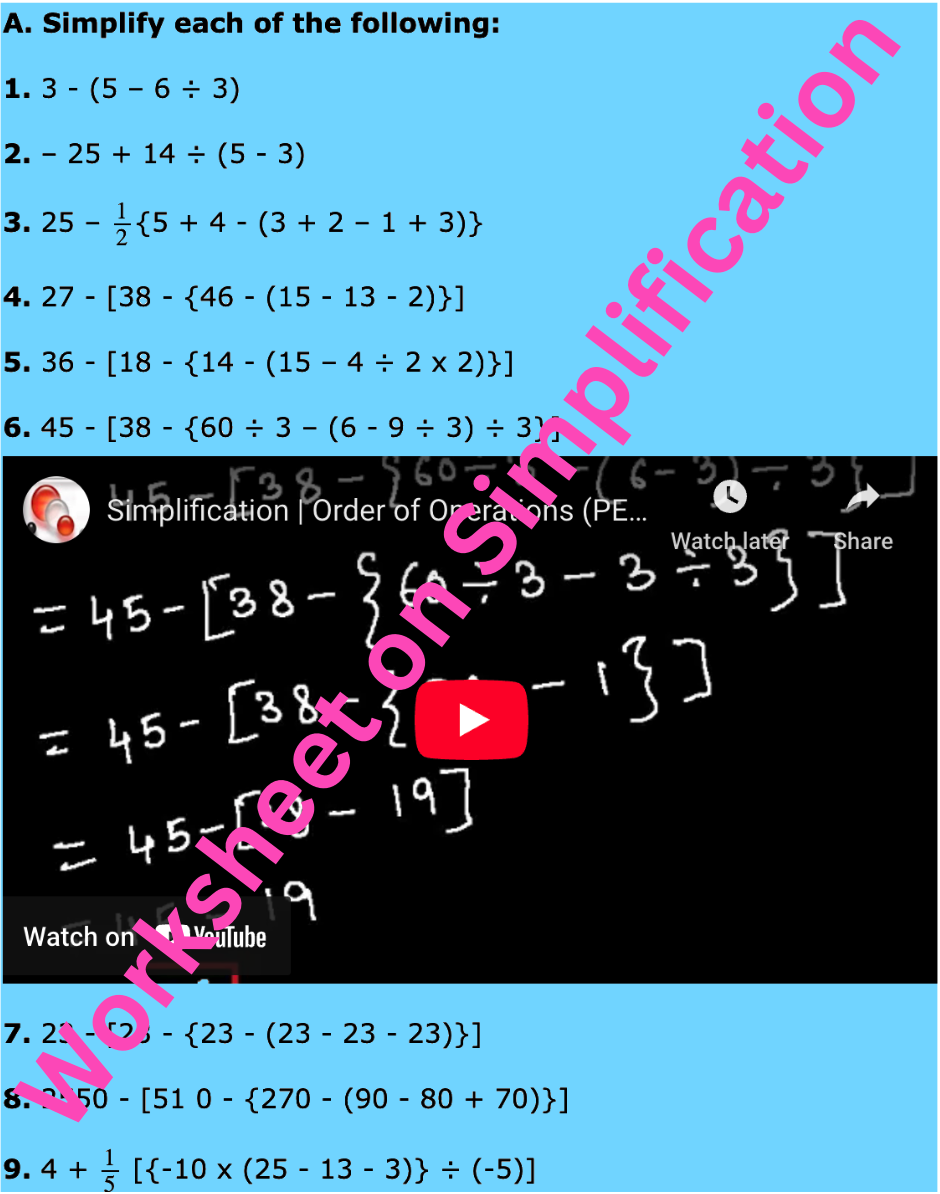Establishing an Equation
We will discuss here about establishing an equation.
In a given context, the relation between variables expressed by equality (or inequality) is called a formula. When a formula is expressed by an equality, the algebraic expression is called an equation.
Step I: Symbolize the variables of the context by a, x, A, X, etc.
Step II: Use the laws or conditions of the context to establish equality (or inequality) between the variables.
This equality (or inequality) between the variables is a formula for the variables . In case of equality, we get an equation.
Solved examples on establishing an equation or framing a formula:
1. Let the base of a triangle be b, its height h and the area A.
The context is form mensuration. We know that
area of a triangle = 12 × base × height.
Therefore, A = 12 bh. This is the formula for the given context.
It generates a simple rule of mensuration for finding the area of a triangle.
2. Let a sum of $ P be invested in a bank at a simple interest rate of r% per annum for a period of n years. At the end of n years an amount of $ A is obtained.
The context is form arithmetic. We know that
Amount = Principal + Interest.
We know that
Interest = Principal × Rate × Time100
Therefore, A = P + P×r×n100
This is the formula for the given context.
From Establishing an Equation to HOME PAGE
Didn't find what you were looking for? Or want to know more information about Math Only Math. Use this Google Search to find what you need.
Recent Articles
-
Counting Numbers from 1 to 50 | Match the Number | Missing Numbers
Apr 04, 25 03:46 PM
In counting numbers from 1 to 50, recognize the numbers, count and then join the numbers in the correct number order. Here we mainly need eye-hand coordination to draw the picture and maintain the num -
Counting Eleven to Twenty with Numbers and Words |Numbers from 11 - 20
Apr 04, 25 03:21 PM
Counting eleven to twenty with numbers and words are explained below. One ten and one more is eleven. Eleven comes after ten. One ten and two more is twelve. Twelve comes after eleven. -
5th Grade BODMAS Rule Worksheet | PEMDAS | Order of operations|Answers
Apr 03, 25 03:11 PM
In 5th Grade BODMAS Rule Worksheet you will get different types of problems on mathematical expressions involving different operations, mathematical expression with 'brackets' and 'of' and simplifying… -
Worksheet on Simplification | Simplify Expressions | BODMAS Questions
Apr 03, 25 02:58 PM
In worksheet on simplification, the questions are based in order to simplify expressions involving more than one bracket by using the steps of removal of brackets. This exercise sheet -
Divisible by 2 Video |Test of Divisibility by 2 Trick| Rules| Examples
Apr 03, 25 10:25 AM
A number is divisible by 2 if the digit at unit place is either 0 or multiple of 2. So a number is divisible by 2 if digit at its units place is 0, 2, 4, 6 or 8.





New! Comments
Have your say about what you just read! Leave me a comment in the box below. Ask a Question or Answer a Question.